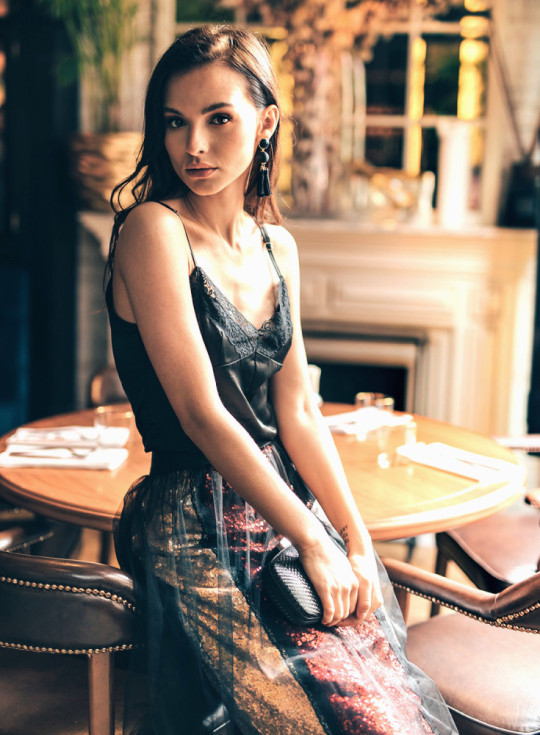#Bojana D.
Text

Bojana D.
79 notes
·
View notes
Text

#i-D Magazine#i-D#Nadine Ijewere#Bojana Kozarevic#November 2018#2018#Winter 2018#Naoki Komiya#Celia Burton#Amy Deakin#Natasha Tigwell#Wayne Booth#Y/Project#Area#Mulberry
24 notes
·
View notes
Note
Hey Bojana! Just wanted to say I love your builds, they are mind blowing! If you ever need some new inspiration for what to build next I would love to see builds from TS2 from you, like the Dead End Lane where Olive Specter lived :D (It's not a request! Just some thoughts ahah) thank you for sharing your beautiful creations with us <3 I really appreciate it!
Hello! You won't believe it but I'm working on it already, omg what a coincidence!!! 😂😂😂
1 note
·
View note
Text

20 notes
·
View notes
Photo

i-D Magazine photographer Alexandra Leese stylist Bojana Kozarevic
49 notes
·
View notes
Photo

HoYeon Jung / Photograph Alexandra Leese / Styling Bojana Kozarevic / i-D Magazine
#hoyeon jung#alexandra leese#bojana kozarevic#id magazine#fashion#fashion photography#black and white#black and white aesthetic
169 notes
·
View notes
Photo

Lara Mullen for I-D Magazine Spring 2020
Photographed by Alex Leese
Styled by Bojana Koz
45 notes
·
View notes
Text
My Personal Eurovision Winners (and then some) Part VII: 2010-2020
And now we reach the final part of this 7 part series. Thank you all for actually sticking with this, because I know some people read it and that makes me a happy kitty :’)
Now, the 2010s were a weird decade for me, since this is the only decade I actually watched live. I started watching Eurovision in 2010 (though I have some vague memories of 2006), started taking notes on the contest in 2012, and started getting into the fandom around... 2014-ish. And confession: I haven’t rewatched any 10s contest since.
The 10s winners are a mixed bunch. I’d put them in the same ballpark as the 00s, only this time I really dislike the ones I dislike. Like they’d probably be bottom tier, would refuse to listen to songs. But I’m procrastinating.
2010- Spain- Daniel Diges- “Algo pequenito”
Honestly I think I only remembered this song because it had a ballet dancer in it. I didn’t even notice they got stage jumped.
But then again, he fits right at home with all the other chaos on stage.
2011- Denmark- A Friend in London- “New Tomorrow”
I remember being absolutely convinced this song would win on the night because I was led to believe that only Scandinavian countries win Eurovision these days because they pay their neighbours to vote for them or whatever shit the UK media spews out and being very disappointed when it didn’t.
I learnt not to trust the UK propaganda machine after that.
... Or so I thought.
ANYWAYS... I just really like this song, I found it very appealing as a 14 year old going into the contest completely blind and I find it appealing as a 24 year old now. It’s a corny late 00s/early 10s pop-rock anthem, sure but...
Come on, are we really expecting anything else?
2012- Spain- Pastora Soler- “Quedate Conmigo”
Is it me or was 2012 a really terrible year? I barely remember anything from it.
Aside from the winner, but I haven’t been given a chance to forget it. Lucky me.
It was between Spain and Iceland for 2012 for me though, I ddn’t really want to put either since I put Spain down for 2010 and Iceland for 2013, but hey, unlike with Iceland’s song I haven’t gotten sick of this one yet ¯\_(ツ)_/¯
2013- Iceland- Eythor Ingi- “Ég á Líf”
Do you know how hard it is coming from a family of Only Teardrops stans and preferring a song that’s not only not in English but also stereotypically boring?
... The answer is not at all because I refuse to tell my family which Eurovision songs I actually like.
Anyways, stick with the live version of this one, I just prefer the way he sings it. It feels a lot more heartfelt and impassioned than the studio at least.
2014- Portugal- Suzy- “Quero Ser Tua”
So despite 2014 having a lot of things people remember really fondly (ie, winning entry, runner up, stage, etc) the songs were...
Well, I can barely remember anything from this year aside from the winner had a beard, the Dutch sent country and Poland sent a whole lot of boobs. And also this. I liked this. I don’t remember it not qualifying though, I must’ve left the room or something. I just remember watching the final and Portugal not being there and being very :(
2015- Serbia- Bojana Stamenov- “Beauty Never Lies”
I remember being absolutely convinced this song would win on the night because I was led to believe that-
I.... probably should have learnt my lesson from 2011.
But to quote myself from when I was asked to review this song...
“But yes, this is either my 2015 winner or runner up depending on how I’m feeling about Heroes. Which is bizarre as all Hell given how A) I don’t usually give a fuck about Balkan entries and B) It’s… really not the kind of song I’d usually gravitate towards. I’m sure you’ve seen enough of this blog to know that “I’m different and that’s a good thing” club songs aren’t exactly my cup of coffee after all. But… yeah, for some reason I just like this song. Probably my favourite Serbian entry behind Molitva if I’m honest.”
2016- France- Amir Haddad- “J’ai cherche”
Man, anyone else remember the disappointment of spending the entire ESC season listening to a song and hyping it up, only for the live performance to suck? That’s this song.
Granted the studio still goes hard af, and I still like it but man, this is the song that made me realise just how much a live performance can change a song.
2017- Croatia- Jaques Houdek- “My Friend”
I was going to put Italy for this but fuck it, I wasn’t about to have another double winner because double wins make me mad.
Uh, spoilers for 2018 by the way.
But this song is just proof that Croatia should be the only country in Eurovision allowed to send opera songs. Namely because they’ve sent like, what, two and they’ve both been amongst my favourite entries of that year.
2018- Italy- Ermal Meta & Fabrizio Moro- “Non mi avette fatto niente”
Oh my basic, basic ass fave. How I wish you’d come second. How I wish you’d come first.
2019- Malta- Michaela Pace- “Chameleon”
I ALMOST went with Romania for this, but I wanted to limit myself to one NQ winner and I blew that card on 2014.
Not that it matters much because unlike 2014, I found 2019 to be a fairly strong year. Granted there were a few songs that were so shoved in my face I’d rather drink a tall glass of cold vomit than listen to them ever again (see: Soldi), but there were still a lot of songs I would probably say could make it into my top three of that country.
This being one of them.
Now Malta is a pretty terrible country in Eurovision, in my opinion. Their 70s entries are completely forgettable, their 90s entries are some of the worst Eurovision songs I’ve heard, and the 00s is a mix of both. Thankfully they’ve managed to clean themselves up in recent years; their 2017 and 18 entries both deserved to qualify in my opinion, and their 2019 entry is the best they’ve ever sent.
2020- Ukraine- Go_A- “Solovey”
So 2020 blew ass in terms of songs, but this song didn’t blow ass at all let’s try and talk about it for a while.
Key word being try, because I’m bored and I want to get this posted as soon as possible.
Anyways, this song was love at first listen. An immediate download. Had it on loop for like, an hour. I just fell for this song, and I still absolutely love it.
Aaaand that’s a wrap! This wasn’t as fun as I’d hoped it would be, but it’s something I wanted to do for a while :D
#eurovision#on one hand i'm glad this is over but on the other i have no idea what to post now lmao#mod apeaks#mod's personal winners
4 notes
·
View notes
Text
ZDENKA BADOVINAC

Dernière minute : séminaire reporté Nous sommes au regret de devoir reporter la séance avec Zdenka Badovinac à une date ultérieure. Le grand nombre de vos demandes d'inscription pour cette séance prouve l'attention chaleureuse que suscite la démarche de Zdenka. Nous souhaitons qu'en cette période de turbulences et de tension, il témoigne publiquement de notre solidarité.
Urgent: Session postponed We regret that we have to postpone the meeting with Zdenka Badovinac to a later date. The large number of applications we received for this session proves the warm attention that Zdenka's approach has received. We wish that in this period of turbulence and tension, it publicly testifies to our solidarity.
Mercredi 27 janvier à 18h (heure de Paris)
Wednesday January 27, 6pm (Paris time)
Bonjour à vous !
Nous vous espérons en bonne santé, vous, vos proches, où que vous vous
trouviez confiné·es.
Ce séminaire aura lieu en ligne via Zoom
Le nombre de places étant limité, Il est nécessaire de s’inscrire préalablement : [email protected]
Hello Everyone!
We hope you and your loved ones are well and safe.
This seminar will take place online via Zoom
The number of attendees is limited, please register at this address if you wish
to attend: [email protected]
Jusqu’à une date très récente, Zdenka Badovinac, curatrice, historienne d’art, critique, avait refondé, reconstruit et accompagné la Moderna galerija de Ljubljana. Elle a en effet dirigé cet établissement muséal (aujourd’hui composé de deux sites : le Musée d'art moderne et le Musée d'art contemporain Metelkova) depuis 1993, peu après l'effondrement de la Yougoslavie communiste, les débuts de la guerre dans les Balkans, et la fondation d’une Slovénie indépendante. Son travail institutionnel s’est efforcé de mettre en lumière les processus difficiles de redéfinition de l'histoire en parallèle avec les héritages des avant-gardes en ex-Yougoslavie et plus largement dans l’Europe de l’Est. L’espace concret du musée a également servi de plate-forme pour instaurer un dialogue avec les scènes artistiques contemporaines internationales.
La première exposition de Zdenka Badovinac à aborder ces questions a été “’Body and the East : des années 1960 à nos jours“ (1998). Elle est également à l'origine de la première collection d'art d'Europe de l'Est, “Arteast 2000+“. Parmi ses projets récents, les plus importants ont été consacrés à “NSK from Kapital to Capital : Neue Slowenische Kunst : An Event of the Final Decade of Yugoslavia“, Moderna galerija Ljubljana, 2015 (puis au Van Abbemuseum, Eindhoven, 2016 ; Garage Museum of Contemporary Art, Moscou, 2016 ; et au Museo Reina Sofía Madrid, 2017) ; “NSK State Pavilion », 57ème Biennale de Venise, 2017, avec Charles Esche ; “L’héritage de 1989. Étude de cas : La deuxième exposition de documents yougoslaves“, Moderna galerija, Ljubljana, 2017, en collaboration avec Bojana Piškur ; “Hello World. Revising a Collection“, Hamburger Bahnhof - Museum für Gegenwart - Berlin, 2018 ; “Sites of Sustainability Pavilions, Manifestos and Crypts , Moderna galerija, Ljubljana, 2018-2019 ; “Créatures célestes : Ni humain ni animal“, Musée d'art contemporain Metelkova, Ljubljana, co-commissariat avec Bojana Piškur, 2018.
Zdenka Badovinac est à l’origine d réseau L’internationale qui associe, autour de sept musées européens (MG+MSUM (Ljubljana, Slovenie) ; Museo Reina Sofía (Madrid,Espagne) ; MACBA (Barcelona,Espagne) ; M HKA, (Antwerp, Belgique) ; MSN (Warsovie, Pologne), SALT (Istanbul & Ankara, Turquie), Van Abbemuseum (Eindhoven, Pays Bas), une constellation d’institutions à travers le monde dans le cadre d’un projet critique et internationaliste qui se présente comme une alternative aux stratégies hégémoniques propres à la “Globalisation». L’Internationale online est la plateforme critique de ce contre projet institutionnel.
Zdenka Badovinac a été commissaire slovène à la Biennale de Venise de 1993 à 1997, en 2005 et 2017 et commissaire autrichienne à la Biennale de Sao Paulo en 2002. Elle a également été présidente du CIMAM, 2010-2013. En décembre 2020, le nouveau gouvernement de droite slovène l'a contrainte à quitter son poste de directrice de la Moderna Galerija de Ljubljana, dans un geste qu'elle a qualifié d'"absolument politique". (2021)
[EN] Zdenka Badovinac is a curator and writer who served from 1993-2020 as Director of the Moderna galerija in Ljubljana, comprised since 2011 of two locations: the Museum of Modern Art and the Museum of Contemporary Art Metelkova. In her work, Badovinac highlights the difficult processes of redefining history alongside different avant-garde traditions within contemporary art.
Badovinac’s first exhibition to address these issues was Body and the East: From the 1960s to the Present (1998). She also initiated the first Eastern European art collection, Arteast 2000+. One her most important recent projects is NSK from Kapital to Capital: Neue Slowenische Kunst: An Event of the Final Decade of Yugoslavia, Moderna galerija, 2015 (traveled to Van Abbemuseum, Eindhoven, 2016; Garage Museum of Contemporary Art, Moscow, 2016; and the Museo Reina Sofía Madrid, 2017); NSK State Pavilion, 57th Venice Biennale, 2017, co-curated with Charles Esche; The Heritage of 1989. Case Study: The Second Yugoslav Documents Exhibition, Moderna galerija, Ljubljana, 2017, co curated with Bojana Piškur; Hello World. Revising a Collection, Hamburger Bahnhof – Museum für Gegenwart – Berlin, 2018; Sites of Sustainability Pavilions, Manifestos and Crypts, Moderna galerija, Ljubljana, 2018-2019; Heavenly Beings: Neither Human nor Animal, Museum of Contemporary Art Metelkova, Ljubljana, co-curated with Bojana Piškur, 2018.
Zdenka Badovinac is at the origin of the international network L'internationale, which brings together seven European museums (MG+MSUM (Ljubljana, Slovenia); Museo Reina Sofía (Madrid, Spain); MACBA (Barcelona, Spain); M HKA, (Antwerp, Belgium); MSN (Warsaw, Poland), SALT (Istanbul & Ankara, Turkey), Van Abbemuseum (Eindhoven, The Netherlands), a constellation of institutions around the world in a critical and internationalist project that presents itself as an alternative to the hegemonic strategies of "Globalization". The Online International is the critical platform of this institutional counter-project.
Badovinac was Slovenian Commissioner at the Venice Biennale from 1993 to 1997, 2005 and 2017, and Austrian Commissioner at the Sao Paulo Biennial in 2002 and the President of CIMAM, 2010-2013. (2019). In December 2020, she was forced by Slovenia’s new right-wing government from her post as director of Ljubljana’s Moderna Galerija in a move she described as "absolutely political." (2021)
Programmation et prochains rendez-vous sur ce site ou par abonnement à la newsletter : [email protected]
Pour regarder les séminaires antérieurs : http://www.vimeo.com/sysk/
Séminaire conçu et organisé par Patricia Falguières, Elisabeth Lebovici et Natasa Petresin-Bachelez et soutenu par la Fundación Almine y Bernard Ruiz-Picasso para el Arte
1 note
·
View note
Text
i had a conversation with 🇷🇸 's eurovision 2015 representative bojana today :D
#she's my fave out of our acts#anyways she came to the booth is was volunteering at#so it was all professional#but she's a chill chick w/ a really nice fashion sense
4 notes
·
View notes
Photo
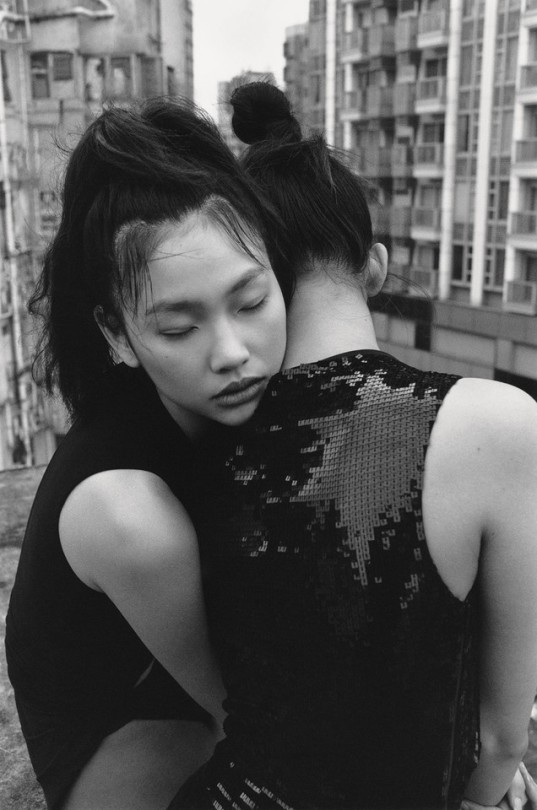
For The Homegrown Issue of i-D, Alexandra Leese and Bojana Kozarevic capture the designs of the moment on a beautifully grey Hong Kong day.
28 notes
·
View notes
Text
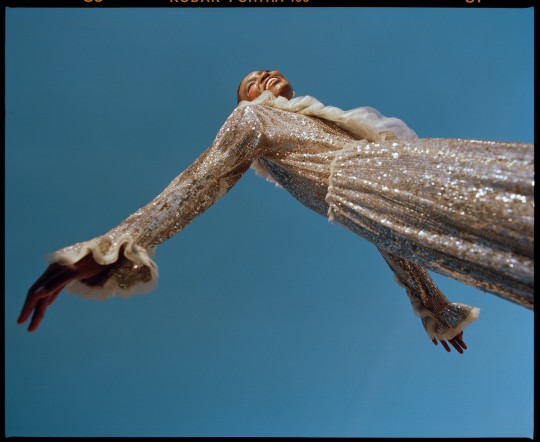
#Gucci#Soko#i-D Magazine#i-D#Nadine Ijewere#Bojana Kozarevic#Naoki Komiya#Celia Burton#Thomas Petherick#Nayara Oliveira#Winter 2018#2018
0 notes
Photo



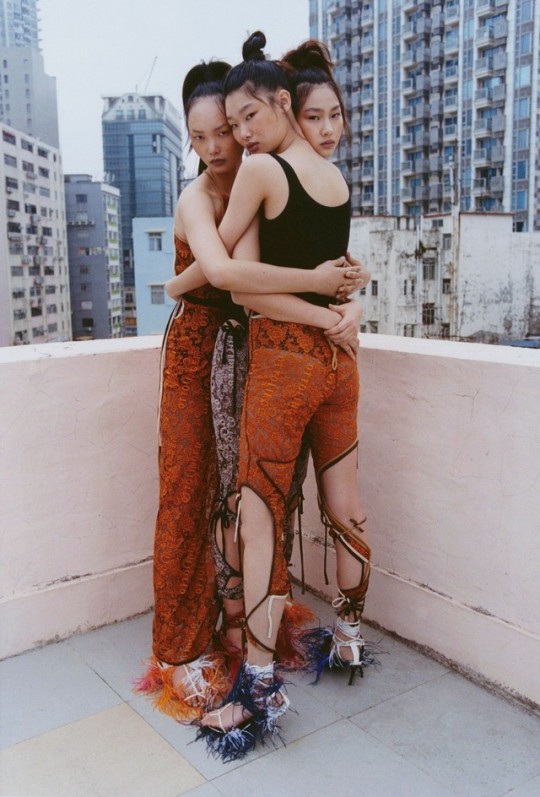
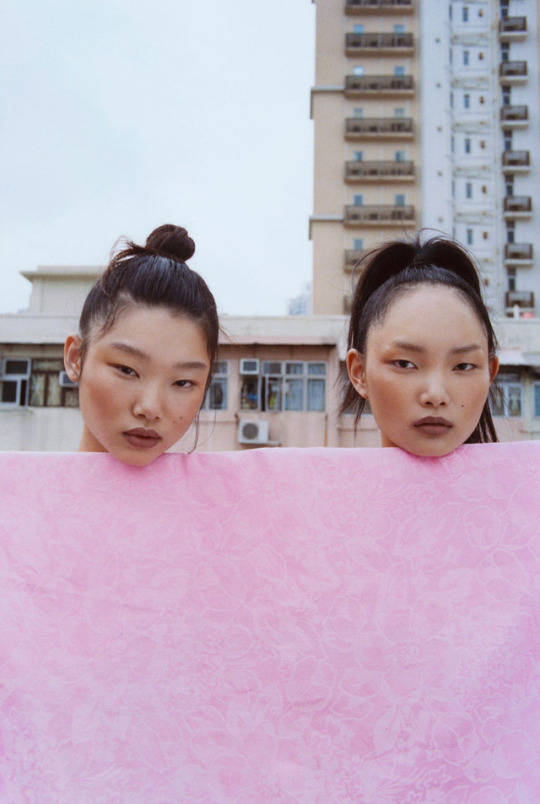
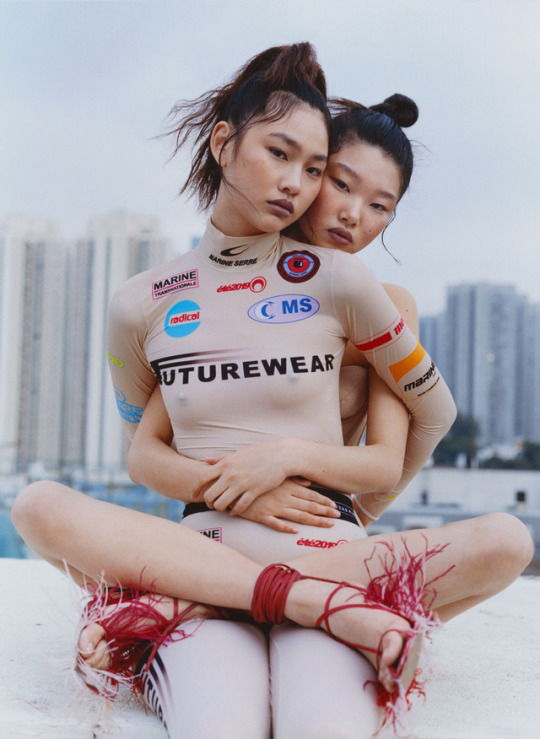




Bae Yoon Young, HoYeon Jung & Ling Ling Chen in Hong Kong for i-D — March 2019.
Photographer: Alexandra Leese
Stylist: Bojana Kozarevic
HairStylist: Roku Roppongi
MUA: Gina Blondell
Casting: Troy Fearn
[ PART 2 ]
#정호연#Jung Ho Yeon#HoYeon Jung#陈琳#Ling Ling#Ling Chen#배윤영#Bae Yoon Young#Alexandra Leese#i D#Hong Kong#worldwide#fashion#worldwidefashion
45 notes
·
View notes
Text
Baking is a Science!
With baking comes science, which many do not think about when we are just simply enjoying a baked good. In the article The Influence of Baking Time and Temperature on the Characteristics of Gluten Free Cookies Enriched with Blueberry Pomace, the researchers explore the effects of baking temperature and time on the characteristics and quality of cookies, but specifically with gluten free cookies that were enriched with blueberry pomace. This research was published in 2014 through the journal Food and Feed Research. The authors of this article are Bojana M. Saric, Natasa M. Nedelijkovic, Olivera D. Simuruna, Mladenka V. Pestoric, Jovana J. Kos, Anamarjia I. Mandic, Marijana B Sakac, Ljubisa C. Saric, Dorde B Psodorov, Aleksandra C. Misan.
Their methods consisted of baking six cookies at two different temperatures and different baking times. The researchers also used ingredients in the cookies: gluten-free mixture, blueberry pomace, sugar, glucose syrup, vegetable fat, powdered egg, and water that is known to affect the quality of the cookie. The weight of the cookie was measured before and after baking to make amends for baking weight loss. Texture analysis of the cookie was conducted by using a TA.XTPlus Texture Analyzer. Moisture content of the cookies was determined according to the AOAC (2000) method. Water activity was determined by using a Testo 650 measuring instrument with a pressure-tight precision humidity probe. Sensory assessment was performed by a team of experts from the Institute of Food Technology, Novi Sad, Serbia. The researchers concluded that blueberry pomace can be used to make gluten-free cookies. The most optimal bake time being 14 minutes at 170 degrees celsius.
The researchers cited the article Effects of Heat Transfer by Radiation and Convection on Browning of Cookies when Baking. The cited article's purpose was to “evaluate the effectiveness of radiative and conductive heat transfer of glucose-glutamate solutions and cookies. I found this article through Kutztown University's library database. The researchers used this source in their effort to figure out which temperature would produce the best results, and to gain the knowledge of how heat transfer also affects the cookie outcome. Both articles were investigating how temperature could affect the outcome of a cookie.
0 notes
Photo
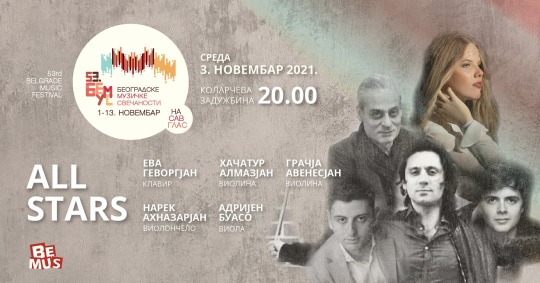
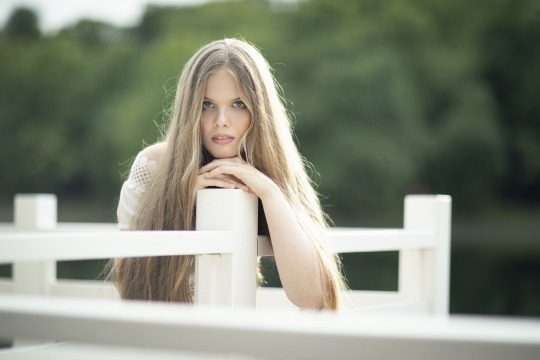




53. BEMUS - All Stars 3.11, uz pijanstkinju Evu Gevorgjan / čuveni bariton Tomas Hempson 04.11.
53. BEMUS nakon impresivnog otvaranja nastavlja sa atraktivnim programom i koncertima međunarodno prizantih muzičara.
U sredu, 3. novembra na velikoj sceni Kolarčeve zadužbine koncert će se održati pod nazivom „All Stars“, na kome će nastupiti svetski poznati muzičari: violinisti Hačatur Almazjan i Gračja Avanesjan, Adrijen Buaso - viola, Narek Ahnazarjan - violončelo i mlada pijanistkinja za koju smatraju da je zvezda u usponu, Eva Gevorgjan. Eva će nastupiti umesto ranije najavljene Hatje Bunijatišvili koja je iz zdravstvenih razloga sprečena da dođe. Na programu će se naći: P. I. Čajkovski: Andante cantabile (II stav Gudačkog kvarteta br. 1, op. 11) posvećen Ivanu Tasovcu; D. Šostakovič: Gudački kvartet br. 8 i S. Frank: Klavirski kvintet.
Ulaznice su u prodaji na blagajni Kolarca, a povraćaj već kupljenih karata usled izmene izvođača moguć je od ponedeljka 8. novembra.
U četvrtak, 4. novembra: Tomas Hempson, Simfonijski orkestar RTS-a, dirigent Bojan Suđić
Veoma aktuelan svetski bariton za koga se kaže da je najbolji Figaro koji postoji, Tomas Hempson, održaće koncert u Kolarčevoj zadužbini u četvrtak 04. novembra zajedno sa Simfonijskim orkestrom Radio televizije Srbije pod dirignetskim vođstvom Bojana Suđića. Gošće programa biće naši svetski poznati soprani : Dragana Radaković i Aleksandra Jovanović. Na programu će biti V. A. Mocart: arije iz opera „Tako čine sve“, „Don Đovani“, „Figarova ženidba“, „Čarobna frula“; Đ. Verdi: arije iz opera „Don Karlos“ i „Magbet“. Ulaznice se mogu nabaviti na blagajni Kolarčeve zadužbine.
Foto: BEMUS/promo
0 notes
